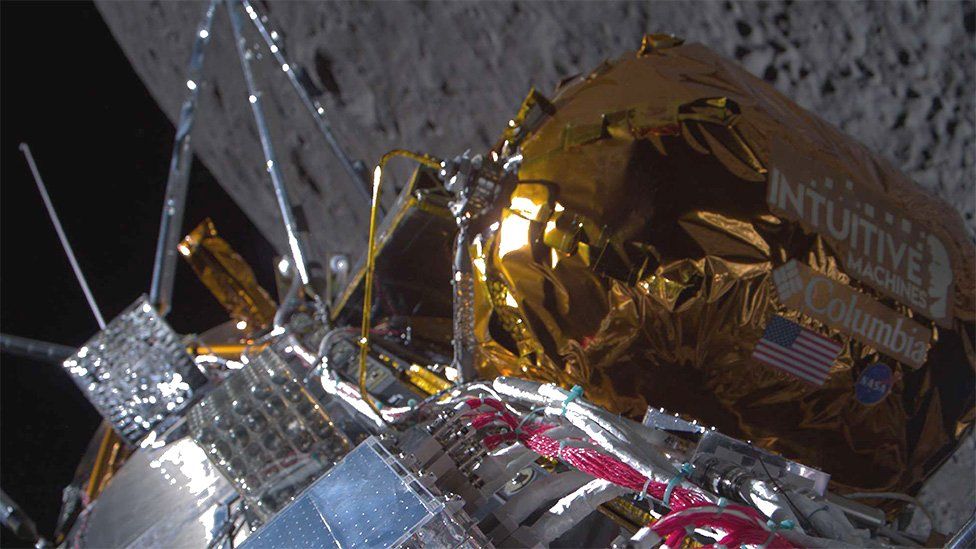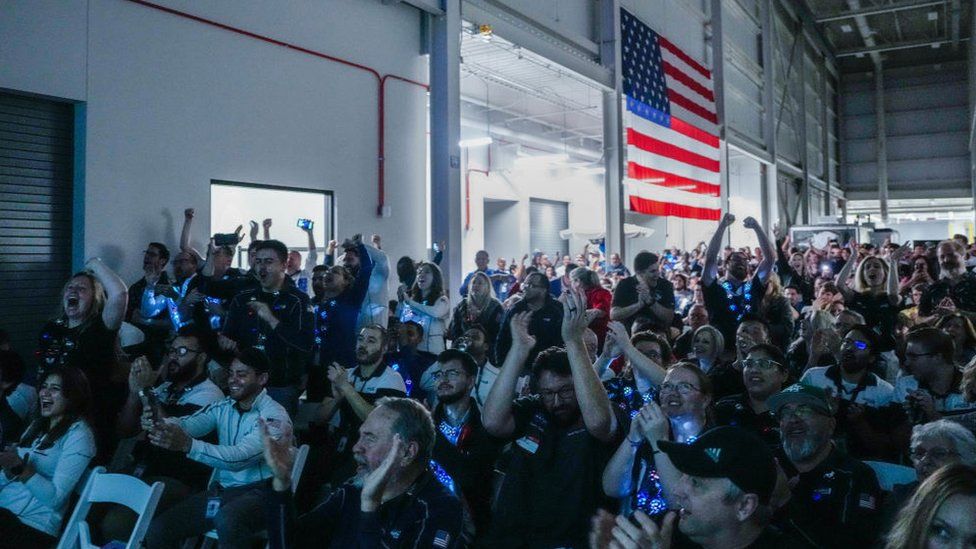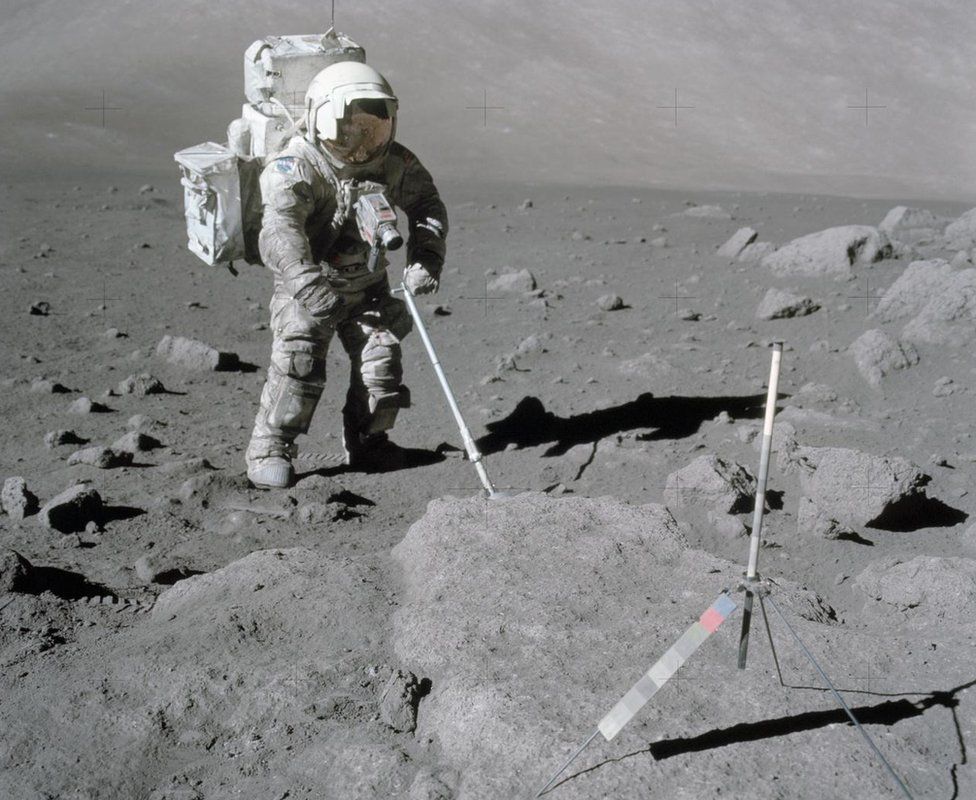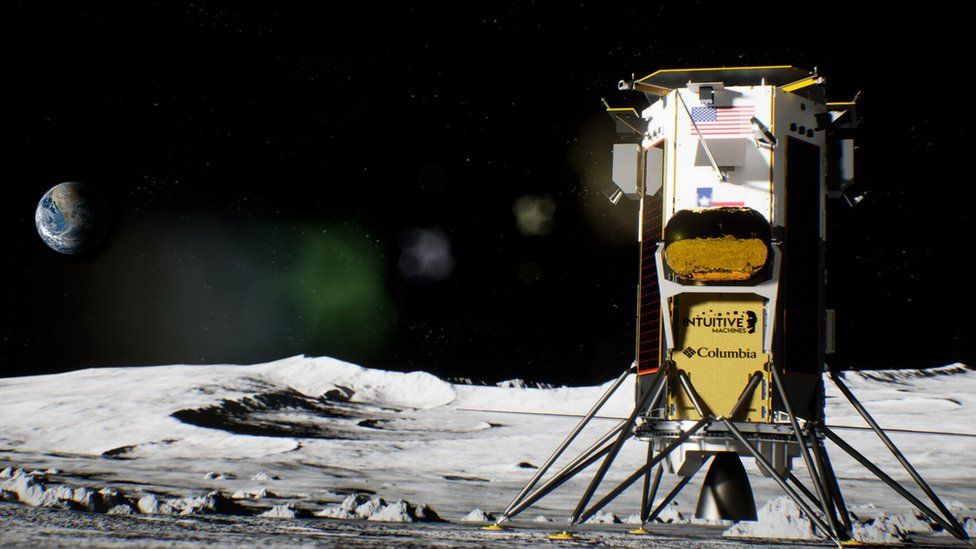Intuitive Machines completes the first ever lunar touchdown by a privately built spacecraft.
 Image source, Intuitive Machines
Image source, Intuitive MachinesAn American company has made history by becoming the first commercial outfit to put a spacecraft on the Moon.
Houston-based Intuitive Machines landed its Odysseus robot near the lunar south pole.
It took some minutes for controllers to establish that the craft was down, but eventually a signal was received.
“What we can confirm, without a doubt, is our equipment is on the surface of the Moon and we are transmitting,” flight director Tim Crain announced.
Staff at the company cheered and clapped at the news.
It was an important moment, not just for the commercial exploitation of space but for the US space programme in general.
Intuitive Machines has broken the United States’ half-century absence from the Moon’s surface. You have to go back to the last Apollo mission in 1972 for an occasion when American hardware nestled down gently in the lunar soil.

Image source, Getty Images
The US space agency Nasa had purchased room on Odysseus for six scientific instruments, and its administrator Bill Nelson was quick to add his congratulations to Intuitive Machines for a mission he described as a “triumph”.
“The US has returned to the Moon,” he said. “Today, for the first time in the history of humanity, a commercial company – an American company – launched and led the voyage up there. And today is the day that shows the power and promise of Nasa’s commercial partnerships.”
Controllers had to deal with an almost mission-stopping technical problem even before the descent began.
Odysseus’ ranging lasers, which were supposed to calculate the craft’s altitude and velocity, weren’t working properly.
Fortunately, there were some experimental lasers from Nasa on board, and engineers were able to patch these across to the navigation computers.
Odysseus touched down at 23:23 GMT. At first, there was no signal at all from the robot. There were plenty of nerves as the minutes ticked by, but eventually a communications link was made, albeit a faint one.
This led to some concerns about the status of the lander. Within a couple of hours, however, Intuitive Machines was reporting that Odysseus was standing upright and sending back data, including pictures.

Image source, Getty Images
The targeted landing site was a cratered terrain next to a 5km-high mountain complex known as Malapert. It’s the southernmost point on the Moon ever visited by a spacecraft, at 80 degrees South.
It’s on the shortlist of locations where Nasa is considering sending astronauts later this decade as part of its Artemis programme.
There are some deep craters in this region that never see any sunlight – they’re permanently in shadow – and scientists think frozen water could be inside them.
“The ice is really important because if we can actually take advantage of that ice on the surface of the Moon, that’s less materials we have to bring with us,” explained Lori Glaze, Nasa’s director of planetary science.
“We could use that ice to convert it to water – drinkable drinking water – and we can extract oxygen and hydrogen for fuel and for breathing for the astronauts. So it really helps us in human exploration.”

Image source, NASA
Nasa’s six payloads on board Odysseus are a mix of technology demonstration and science.
A key investigation will be one looking at the behaviour of lunar dust, which the Apollo astronauts found to be a serious nuisance, scratching and clogging their equipment.
The agency’s scientists want to understand better how the dust is kicked up by landing craft to hang just above the surface before then settling back down.
The six commercial payloads on board include a student camera system from Embry-Riddle Aeronautical University, which should have been deployed from Odysseus when it was still 30m above the lunar surface.
This system was designed to take selfie images as the robot set itself down.
American artist Jeff Koons has also attached a box to the side of the lander that contains 125 small stainless steel balls to represent the Moon’s different phases through a month.

Image source, Intuitive Machines
